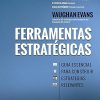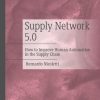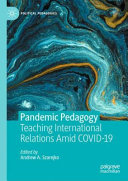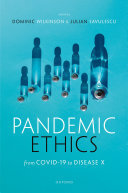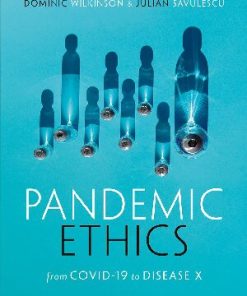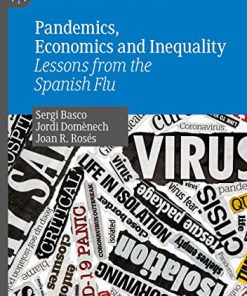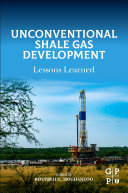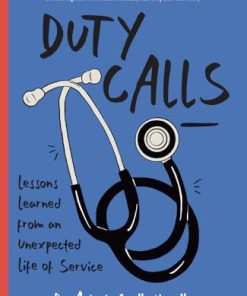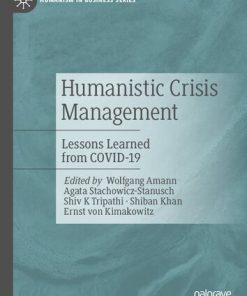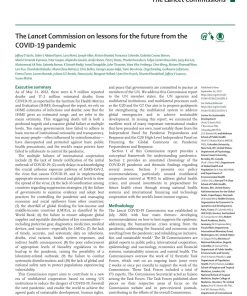(EBook PDF) Transportation Amid Pandemics Lessons Learned from COVID19 1st edition by Junyi Zhang, Yoshitsugu Hayashi 0323997716 9780323997713 full chapters
$50.00 Original price was: $50.00.$25.00Current price is: $25.00.
Transportation Amid Pandemics: Lessons Learned from COVID-19 1st edition by Junyi Zhang, Yoshitsugu Hayashi – Ebook PDF Instant Download/DeliveryISBN: 0323997716, 9780323997713
Full download Transportation Amid Pandemics: Lessons Learned from COVID-19 1st edition after payment
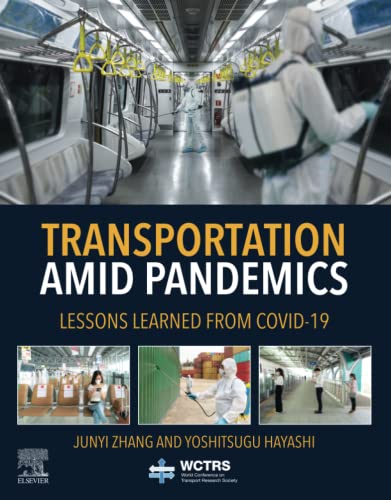
Product details:
ISBN-10 : 0323997716
ISBN-13 : 9780323997713
Author: Junyi Zhang, Yoshitsugu Hayashi
Transportation Amid Pandemics: Practices and Policies is the first reference on pandemics (especially COVID-19) in the context of transport, logistics, and supply chains. This book investigates the relationships between pandemics and transport and evaluates impacts of COVID-19 and effects of policy responses to address them. It explores how to recover from pandemics, reveals governance for immediate policy responses and future innovations, suggests strategies for post-pandemic sustainable and resilient development, shares lessons of COVID-19 policymaking across countries, and discusses how to transform transport systems for a better future. Transportation Amid Pandemics offers transport researchers and policymakers the scientific evidence they need to support their decisions and solutions against pandemics.
Transportation Amid Pandemics: Lessons Learned from COVID-19 1st Table of contents:
Chapter 1: COVID-19 and transport: Recording the history of fights against pandemics
Abstract
1.1: Introduction
1.2: Part I: Pandemics
1.3: Part II: Overall impacts
1.4: Part III: Logistics and supply chains
1.5: Part IV: Responses to distancing policies and public transport
1.6: Part V: Recovery
1.7: Part VI: Future transformation
1.8: Summary
1.9: Final remarks
References
Part I: Pandemics
Chapter 2: Historical overview of pandemics
Abstract
2.1: Introduction
2.2: Case study 1: Plague (14th, 17–18th)—Pandemic during the age of trading and population growth
2.3: Case study 2: Spanish flu (20th century)
2.4: Case study 3: SARS (21st century)
2.5: Discussion and conclusion
References
Chapter 3: The public health challenge of COVID-19
Abstract
3.1: Introduction
3.2: COVID-19 and emerging infectious diseases (EID)
3.3: COVID-19 situation
3.4: Nonpharmaceutical intervention
3.5: Necessity of planetary health approach
3.6: Conclusion
3.7: Key messages
References
Part II: Overall impacts
Chapter 4: The impacts of the built environment factors and population mobility on the spread of COVID-19 during its initial stage of the COVID-19 pandemic: A case of China
Abstract
4.1: Introduction
4.2: Data and method
4.3: Result
4.4: Conclusion
4.5: Messages
References
Chapter 5: Impacts of COVID-19 on the transport sector in China: Facts and insights from early stages
Abstract
Acknowledgment
5.1: Introduction
5.2: Confirmed infection cases and deaths in China
5.3: Preparedness: Lessons learned from history, guidelines, and contingency plans of different transportation modes and facilities
5.4: Impacts of the COVID-19 pandemic
5.5: During-pandemic policy measures
5.6: Changes in lifestyles and business operation styles as well as society due to the pandemic
5.7: Lessons learned from the during-pandemic measures and experience
5.8: Conclusions, policy recommendations, future research
References
Chapter 6: Impacts of COVID-19 on the economy and the transportation system in Germany
Abstract
6.1: Introduction
6.2: Pandemic waves
6.3: Economic impacts
6.4: Impacts on the transport sector
6.5: Outlook for economic and transport development
6.6: Summary and conclusions
References
Chapter 7: Impacts of COVID-19 on transport and responses to pandemic control in the Philippines
Abstract
7.1: Introduction
7.2: Impacts of the COVID-19 pandemic on the economy and transport environment
7.3: Government response to mitigate pandemic impacts
7.4: Moving forward in incorporating the transport policy framework on how to address COVID-19 pandemic
References
Chapter 8: Changes in mobility and challenges to the transport sector in Brazil due to COVID-19
Abstract
8.1: Introduction
8.2: Remote work and education
8.3: Impacts on transport demand
8.4: Public transport services
8.5: Demand control measures in public transport
8.6: Positive outcomes
8.7: Future trends and policy-related challenges
8.8: Final remarks
References
Part III: Logistics and supply chains
Chapter 9: Control and countermeasures for COVID-19 in the cold chain: The experiences of cold chain logistics in China
Abstract
9.1: Background and research on the cold chain transmission of COVID-19
9.2: Import cold chain links and COVID-19 invasion risk process
9.3: Epidemic risk control in the cold chain
9.4: Epidemic prevention and control mechanism based on cold chain links
9.5: Conclusions and discussion
References
Chapter 10: Urban logistics and COVID-19
Abstract
10.1: Introduction
10.2: Referenced impacts of the pandemic on urban logistics
10.3: Case study in Paris: Impacts of COVID on urban logistics operators
10.4: Policy implications
10.5: Changing urban logistics in a postpandemic world
10.6: Key messages
References
Chapter 11: Freight operations in the European Union during the COVID-19 pandemic: A multicountry comparison
Abstract
11.1: Introduction
11.2: Impact of the COVID-19 pandemic on freight transport in the EU
11.3: Government support for freight operations in the EU
11.4: Conclusion
11.5: Key messages
References
Chapter 12: Short-run impacts of COVID-19 on the maritime and port sector: Measures and recommended policies
Abstract
Acknowledgments
12.1: Introduction
12.2: Immediate impacts of the COVID-19 pandemic
12.3: During-pandemic policy measures
12.4: Changes in lifestyles and business operation styles as well as society due to the pandemic
12.5: Lessons learned from the during-pandemic measures, guidelines, and contingency plans
12.6: Conclusion: Findings and recommendations
References
Chapter 13: Longer-run policy measures on COVID-19 for the maritime and port sector: Plans and recommendations
Abstract
Acknowledgment
13.1: Introduction
13.2: Digitalization
13.3: Climate and energy
13.4: Investment
13.5: Start-up community
13.6: Automation
13.7: Cooperation
13.8: Cluster development
13.9: Hinterland and accessibility
13.10: Labor
13.11: Sector focus: Automative and e-commerce
13.12: Research
13.13: Conclusion: Findings and recommendations
References
Chapter 14: The impact of COVID-19 on air cargo logistics and supply chains
Abstract
14.1: Introduction
14.2: Changing nature of air cargo demand during the COVID-19 pandemic
14.3: Supply side challenges
14.4: Future provision and challenges
14.5: Messages
References
Part IV: Responses to distancing policies and public transport
Chapter 15: Changes in activity organization and travel behavior choices in the United States
Abstract
15.1: Introduction
15.2: Changes in lifestyles
15.3: Changes in work habit and mobility
15.4: Long-term consequences, planning, equity implications, and policy recommendations
15.5: Key messages
References
Chapter 16: Social contact patterns and changes at leisure/tourism activity settings during COVID-19 period: An international comparison
Abstract
Acknowledgment
16.1: Introduction
16.2: Survey and data
16.3: Results
16.4: Conclusions
16.5: Messages
References
Chapter 17: A cross-country analysis of behavioral changes in response to COVID-19 social distancing policies
Abstract
Acknowledgments
17.1: Introduction
17.2: Data
17.3: Methods
17.4: Results and discussion
17.5: Conclusion
17.6: Key messages
References
Chapter 18: The impacts of COVID-19 and social distancing policies on social capital in Japan
Abstract
Acknowledgments
18.1: Introduction
18.2: Data and method
18.3: Results
18.4: Discussion
18.5: Conclusions
18.6: Key messages
References
Chapter 19: Restriction of public transport services as a part of COVID-19 containment policies and user responses
Abstract
19.1: Introduction
19.2: COVID-19 policies in the public transport sector
19.3: User response to public transport during pandemic
19.4: Discussion and conclusion
References
Chapter 20: Comparing mobility, behavior, and public transit’s pandemic adaptation in New Zealand and U.S. cities
Abstract
Acknowledgments
20.1: Introduction
20.2: Methodology
20.3: Selected cities
20.4: Data
20.5: Analysis
20.6: Conclusions
References
Chapter 21: Impact of COVID-19 on transportation in urban India
Abstract
21.1: COVID-19 Pandemic in India
21.2: Public transport usage: Global scenario
21.3: COVID-19 spread and transport usage: Indian scenario
21.4: Effect of COVID-19 on mode choice behavior
21.5: Managing the gap between demand and supply of bus transport during COVID-19: Case study of Delhi
21.6: Role of contactless technology to improve ridership and revenue of public transport
21.7: Concluding remarks
21.8: Key findings
21.9: Policy recommendations
21.10: Research recommendations
References
Chapter 22: Passengers’ perception of COVID-19 countermeasures on urban railway in Bangkok
Abstract
22.1: Introduction
22.2: Review of the countermeasures on public transport in the other countries
22.3: Bangkok urban railway during the pandemic
22.4: Data and method
22.5: Results
22.6: Discussions
22.7: Conclusions
22.8: Message
References
Part V: Recovery
Chapter 23: The resilience of national highway transportation in China under the COVID-19 outbreak
Abstract
Acknowledgments
23.1: Introduction
23.2: Research goal and approaches
23.3: Resilience
23.4: Bounce level
23.5: Relationship between bounce level and recovery time
23.6: Conclusion
References
Chapter 24: Tourism policy responses to COVID-19 and first-stage tourism recovery in China
Abstract
24.1: Introduction
24.2: Research on tourism policy responses to COVID-19 in the first stage
24.3: Method
24.4: Results and discussions
24.5: Conclusions and implications
References
Chapter 25: The recovery of long-distance mobility after COVID-19: What can we expect?
Abstract
25.1: Introduction
25.2: The immediate and global impact of COVID-19
25.3: The long-term impacts of COVID-19 on mobility
25.4: An acceleration of preexisting trends
25.5: Conclusion
References
Chapter 26: Assessing the impacts of COVID-19 on carbon emissions from the road transport sector in China
Abstract
26.1: Introduction
26.2: Data and methods
26.3: Results
26.4: Discussion and conclusions
References
Chapter 27: Contagion spread modeling in transport networks and transport operation optimizations for containing epidemics
Abstract
27.1: Introduction
27.2: Modeling the contagion spreading through transport networks
27.3: Transport operation optimization in the aftermath of COVID-19 pandemic
27.4: Conclusions
References
Chapter 28: COVID-19 and big data technologies: Experience in China
Abstract
28.1: Introduction
28.2: Sources of big data
28.3: Smartphone applications of big data
28.4: Evidence regarding control measures
28.5: Roles of big data in policy implementation
28.6: Conclusion and outlook
References
Part VI: Future transformation
Chapter 29: Collective thoughts about the COVID-19 pandemic and transport from a worldwide expert survey
Abstract
Acknowledgments
29.1: Introduction
29.2: Uncertainties and unknowns
29.3: Mindsets of policymakers
29.4: A chance to make great changes: This will never come again
29.5: Immediate measures for surviving COVID-19
29.6: Measures for the “new normal” period of the COVID-19 pandemic
29.7: Long-term changes in lifestyles
29.8: Measures for developing countries
29.9: Conclusions and future research issues
References
Chapter 30: Leveraging the COVID-19 crisis for better public transport services in Asian cities
Abstract
Disclaimer
30.1: Introduction
30.2: Overview of transport policy responses to COVID-19 in Asia
30.3: Implications of COVID-19 policy responses for public transport services
30.4: Conclusions
30.5: Messages
References
Chapter 31: Putting gender equality in the core of COVID-19 recovery for transport
Abstract
31.1: Introduction
31.2: Impact of COVID-19 on women as transport users
31.3: Impact of COVID-19 on women as transport workers
31.4: Policy responses to improve gender equality in transport
31.5: Policy insights to achieve a more sustainable and inclusive transport future
References
Chapter 32: A proposal of recommendations for post-Corona mobility
Abstract
32.1: Outline of this chapter
32.2: Overview of the pandemic in Japan
32.3: Urban transportation
32.4: Local transportation
32.5: Entire transportation system
32.6: Logistics
32.7: Conclusion
References
Chapter 33: The transport policy response to the COVID-19 pandemic in the UK
Abstract
33.1: COVID-19 in the UK
33.2: Travel trends
33.3: Working from home
33.4: Policy interventions
33.5: Conclusions
References
Chapter 34: Governance for post-COVID-19 carbon reduction: A case study of the transport sector
Abstract
Acknowledgments
34.1: Introduction
34.2: The carbon reduction identity in the transport sector
34.3: DIRECT approach
34.4: Seamless and integrated policymaking and implementation for carbon reduction in the transport sector: A “6-domain and 6-step” approach
34.5: Conclusion and challenges
References
Chapter 35: Governance, COVID responses, and lessons on decision-making in uncertainty
Abstract
Acknowledgments
35.1: Introduction
35.2: What is governance and why does it matter in COVID times?
35.3: COVID responses and their effect of patronage
35.4: Governance and the rethinking of services after COVID
35.5: Conclusion
35.6: Messages
References
Part VII: Conclusions
Chapter 36: Policy recommendations and future challenges
Abstract
36.1: Need for a true transformation of the postpandemic world
36.2: Pandemic response strategies: Zero-tolerance vs. with-virus
36.3: Pandemic-responsive local community
36.4: Pandemic-resilient contingency plan and transportation management
36.5: Transformation of transport policymaking
36.6: Resilient logistics and supply chains
36.7: Pandemic-sensitive tourism and leisure policy
36.8: Planetary health-responsive recovery and ELSI
36.9: Future challenges
People also search for Transportation Amid Pandemics: Lessons Learned from COVID-19 1st:
transportation and pollution
economic impact of pandemics
transportation during pandemic
transportation and fossil fuels
how transportation affects health
Tags:
Transportation,Amid Pandemics,Lessons,COVID,Junyi Zhang,Yoshitsugu Hayashi
You may also like…
Education Studies & Teaching - Teaching & Teacher Training
Pandemic Pedagogy: Teaching International Relations Amid COVID-19
Politics & Philosophy - General & Miscellaneous Philosophy
History - World History
Pandemics, Economics and Inequality: Lessons from the Spanish Flu Sergi Basco
Biography & Autobiography - General & Miscellaneous Biography
Medicine - Clinical Medicine
Medicine - Infectious diseases


